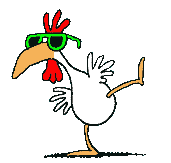
Please be patient. Updates are coming soon!
Highland Cattle
The Highland breed originated in the rugged remote Scottish Highlands. The extremely harsh conditions created a process of natural selection, where only the fittest and most adaptable animals survived to carry on the breed.
Archaeological evidence of the Highland breed goes back to the sixth century, with written records existing from the twelfth century. The first recorded importation into the United States occurred in the late 1890’s .
Aside from being just adorable looking, Highlands have the following attributes:
Hardiness and Vigor
Coat: The double hair coat (long, coarse outer layer and soft wooly inner layer) is one of the most notable differences between Highlands and other breeds. The coat reduces the need for expensive barns and shelters.
Due to the double hair coat, this breed does not need a heavy layer of backfat for insulation. This allows the animal to marble naturally on low input forage while producing lean, low fat, high quality cuts of beef.
Highlands shed out earlier in the spring and produce less hair in a warmer climate, making them suitable for a variety of environments.
Easy Handling: Highlands tend to be docile and calm and do not stress easily. They are easy to work with despite their long horns. The horns are used primarily for knocking down brush to graze, predator control and scratching.
Exceptional Mothering and Calving Ease: Highland cows are noted for being highly devoted and protective mothers. They are noted for calving ease. Due to small calf size (60-70 pounds), calving difficulty is less common. Cows may produce into their late teens reducing the need for frequent herd replacement.
Browsing/Grazing Ability: These cattle are excellent browsers. They have been used worldwide to clear brush lots and grazing improvement projects. Highlands perform well in a variety of feed scenarios whether brush, forage/grass based or grain finished.
Outstanding Beef Quality: Unlike other breeds, Highlands are slow maturing making the meat tender, flavorful and succulent. Highland beef is lower in fat and cholesterol and higher in protein and iron than other beef breeds. (But then, who would want to eat an adorable Highland?)
Highland cattle fit into a variety of operation styles, from the small farm to large commercial beef operations.
Hover over each picture to see description and click to enlarge


Enya, My first Highland Heifer @ 6 months old.



Red the bossy girl
Girlie, the sweetest Highland so far.